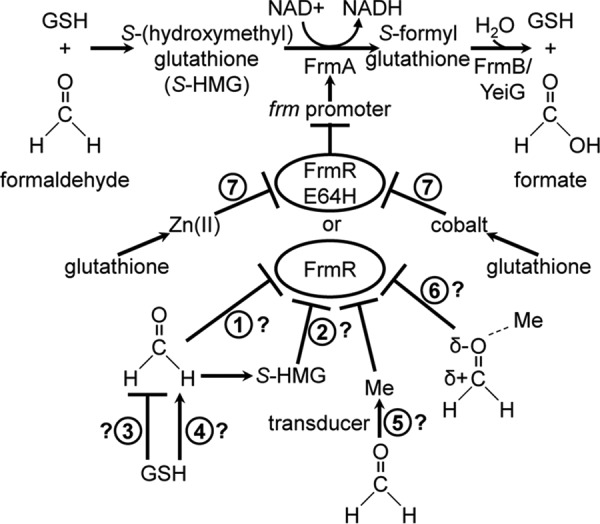FIGURE 1.

Formaldehyde detoxification and sensing. Spontaneous reaction of formaldehyde with GSH generates S-(hydroxymethyl)glutathione (S-HMG), the substrate oxidized by FrmA to S-formylglutathione (28). Following hydrolysis of S-formylglutathione by FrmB, formate is produced as the final product, and GSH is regenerated (22, 29). An additional enzyme, YeiG, is also implicated in formaldehyde detoxification because it demonstrates hydrolytic activity against S-formylglutathione, although yeiG is not FrmR-regulated (27). Notably, FrmB is present in the E. coli but not the Salmonella frm operon. Salmonella FrmR (or FrmRE64H) represses expression from the frm promoter, which is alleviated by exogenous formaldehyde. The intracellular effector of (any) FrmR is unknown, and possibilities include formaldehyde alone (1) or S-(hydroxymethyl)glutathione (2), in which case GSH could act negatively (3) or positively (4) on FrmR-mediated derepression. Alternatively, FrmR derepression may be transduced by a metal intermediate (5) or require activation of formaldehyde by metal (6). FrmRE64H additionally responds to Zn(II) and cobalt; however, the response to metals is lost in cells lacking glutathione (7) (50).
